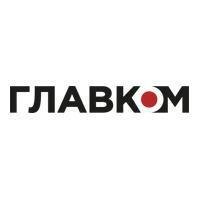- China, Russia and Iran are strengthening military ties through joint naval drills, seeking to enhance regional security cooperation. The exercises demonstrate growing coordination among the three nations in strategic waters.
- The drills, dubbed “Security Belt-2025,” involve simulated maritime attacks, joint search and rescue operations and vessel inspections near Iran’s Chabahar port.
- Observers from multiple nations monitor the exercises, highlighting evolving security dynamics and potential implications for global trade and regional stability.
Full Story
China, Russia and Iran have launched joint naval drills near the Iranian port of Chabahar on the Gulf of Oman to strengthen military cooperation and regional security.
The “Security Belt-2025” exercises include simulated maritime attacks, joint search and rescue drills and vessel inspections.

China’s defense ministry says that Beijing deployed the Type 052D guided-missile destroyer Baotou and the supply ship Gaoyouhu from the 47th naval escort task force. The drills also include warships from Iran’s conventional navy, the Islamic Revolutionary Guard Corps and Russian naval forces.
Why does this location matter?
The Gulf of Oman is a critical trade route and a key passage for global oil and gas shipments. Conducting naval exercises in these waters increases the military presence of China, Russia and Iran in a region closely monitored by Western powers.

Iranian state media reported that observers from several nations, including Azerbaijan, South Africa, Oman, Kazakhstan, Pakistan, Qatar, Iraq, the United Arab Emirates and Sri Lanka are monitoring the drills.
What is driving closer military ties?
China, Russia and Iran have conducted similar naval exercises in recent years, including 2023 and 2024. The latest drills reflect ongoing security coordination among the three nations.
In January, Russian President Vladimir Putin and Iranian President Masoud Pezeshkian signed an agreement expanding trade and military cooperation.
Meanwhile, U.S. relations with Russia and Iran remain strained. Washington continues to pressure Tehran over its nuclear program, while Russia remains engaged in its war in Ukraine. These exercises coincide with broader shifts in international security alliances.
How does this affect global security?
The naval drills highlight evolving security dynamics. Russia has deepened its military and economic ties with China and Iran, while all three nations continue to assert their presence in key strategic regions.
While Moscow and Tehran have not disclosed which of their fleets are participating, Russian ships from the Pacific Fleet conducted artillery drills in the eastern Indian Ocean earlier this month.
Military forces from these nations operating in a key maritime corridor raise questions about regional security and global trade stability.
As China, Russia and Iran expand their military coordination, their naval activities in strategic waterways continue to develop. The long-term implications of these exercises remain uncertain.




















































































